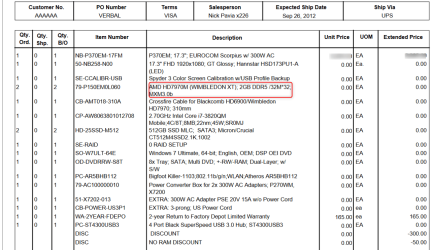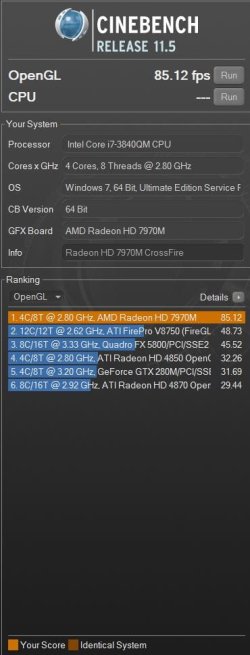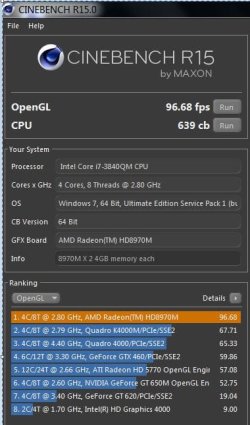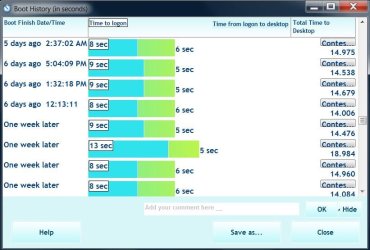- Local time
- 3:47 AM
- Posts
- 2,256
- OS
- WIN 11, WIN 10, WIN 8.1, WIN 7 U, WIN 7 PRO, WIN 7 HOME (32 Bit), LINUX MINT
With the development of industry some products emerged that were notorious for their durability, reliability, and performance. A similar phenomena exists in the world of Personal Computers. I thought it might be a good idea to identify some of these "die hards" and discuss some of the ways that we can keep them running. Some of these platforms are still operating after 15 years or more and many of them are capable of running current software, including Windows 11. Now I realize that Windows 11 requires a little tweaking to run on platforms this old, and sometimes those nasty little yellow triangles in Device Manager aren't going to vanish. That aside, I think it's a noble thing to grant credit where it is due. These days anything over ten years is considered vintage in the world of computing. Why not acknowledge some of that old, reliable hardware to promote some of those things that have been tried, tested, and proven to work? We live in an age where e-waste is a growing concern. Finding ways of keeping some of this older, reliable hardware running could be a contribution to a solution. Feel free to share.
- Windows Build/Version
- ASUS X570 HERO, ASUS X99, ASUS Z97, ASUS 787, DELL X58, GIGABYTE X58, GIGABYTE Z67, and many, many more running various operating systems including Windows 11
My Computer
System One
-
- OS
- WIN 11, WIN 10, WIN 8.1, WIN 7 U, WIN 7 PRO, WIN 7 HOME (32 Bit), LINUX MINT
- Computer type
- PC/Desktop
- Manufacturer/Model
- DIY, ASUS, and DELL
- CPU
- Intel i7 6900K and i9-7960X / AMD 3800X (8 core)
- Motherboard
- ASUS X99E-WS USB 3.1 and ASUS X299 SAGE
- Memory
- 128 GB CORSAIR DOMINATOR PLATINUM (B DIE)
- Graphics Card(s)
- NVIDIA 1070 and RTX 3070
- Sound Card
- Crystal Sound (onboard)
- Monitor(s) Displays
- single Samsung 30" 4K and 8" aux monitor
- Screen Resolution
- 4K and something equally attrocious. I'll be working on this.
- Hard Drives
- A, B, C, D, E, F, G, H, I, J, K, L, M, N, O, P, Q, R, S, T, U, V, W
Ports X, Y, and Z are reserved for USB access and removable drives.
Drive types consist of the following: Various mechanical hard drives bearing the brand names, Seagate, Toshiba, and Western Digital. Various NVMe drives bearing the brand names Kingston, Intel, Silicon Power, Crucial, Western Digital, and Team Group. Various SATA SSDs bearing various different brand names.
RAID arrays included:
LSI RAID 10 (WD Velociraptors) 1115.72 GB
LSI RAID 10 (WD SSDS) 463.80 GB
INTEL RAID 0 (KINGSTON HYPER X) System 447.14 GB
INTEL RAID 1 TOSHIBA ENTERPRIZE class Data 2794.52 GB
INTEL RAID 1 SEAGATE HYBRID 931.51 GB
- PSU
- SEVERAL. I prefer my Corsair Platinum HX1000i but I also like EVGA power supplies
- Case
- ThermalTake Level 10 GT (among others)
- Cooling
- Noctua is my favorite and I use it in my main. I also own various other coolers.
- Keyboard
- all kinds.
- Mouse
- all kinds
- Internet Speed
- 360 mbps - 1 gbps (depending)
- Browser
- FIREFOX
- Antivirus
- KASPERSKY (no apologies)
- Other Info
- Gave Dell touch screen with Windows 11 to daughter and got me an OTVOC. Being a PC builder I own many desktop PCs as well. I am a father of five providing PCs, laptops, and tablets for all my family, most of which I have modified, rebuilt, or simply built from scratch. I do not own a cell phone, never have, never will.













